By Francesco Bianchini
Among the most important landmarks in my life are houses. I believe that I have understood their souls, their languages, and their needs. And in those houses, I’ve felt understood, defined, and safe. This is true for those of long habitation as well as for those living in for short periods of time; those the family or I have owned, but also some I rented. It is not the act of ownership that creates the bond, but the intimacy. It is my family’s last home that I would like to remember here, and that conjures certain gastronomic memories – all the more intensely because I experienced them while living there alone in the period leading up to its sale.
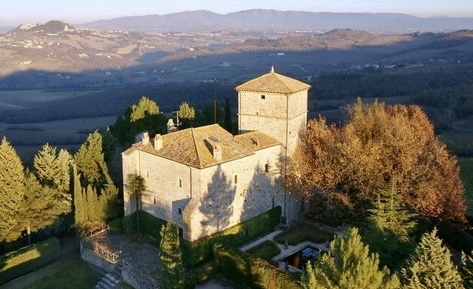
Tower of Porchiano with Todi in the distance
When my father sold La Cervara, where the family had lived for fifteen years, there were still nine of us who needed a roof to shelter under. I accompanied papa on his first visit to the residence of Guy Munthe who had died, aged 49, just after completing his passionate restoration of an ancient watchtower overlooking the Tiber. The property spoke of a singular man possessed of extremely personal attachments to houses, in keeping with his family tradition as creators and collectors of exceptional estates. The Story of San Michele, written by Guy’s grandfather Axel Munthe – tale of the genesis of Villa San Michele in Anacapri – was my parents’ favorite book at the time they settled in Umbria. Despite the coincidence, and because of the tower’s extravagantly convoluted floor plan, I was certain my father would dismiss it as an option to buy – not knowing or fully understanding his inscrutable sentimentality.
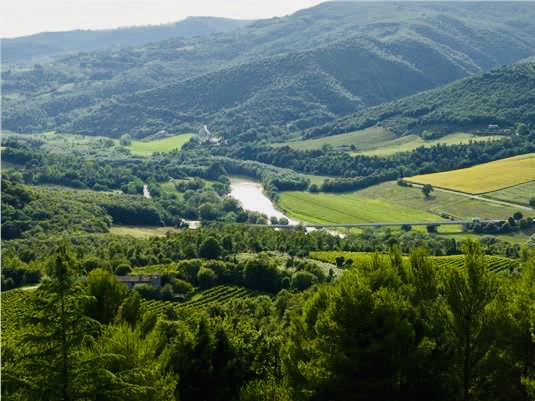
The Tiber from the tower
In the years thereafter, Porchiano was the house in which papa poured the best of himself and his talents as a wannabe architect. Forced to undertake major changes to accommodate our large family, he began with new bathrooms, embedding some in the thickness of the walls; adding more bedrooms, and installing a real kitchen that in Munthe’s time did not exist. Each year papa embarked on new projects: a doorway through the five-foot thick wall to the terrace overlooking the river; an elevator to ease the climb through a six-level house. Dan and I also contributed, decorating ceilings and painting faux marble motifs in exchange for unforgettable stays. My father also turned his attention to the exterior, adding pergolas, pathways, hedges, fountains. Papa loved formal gardens, the simplicity, and rigor of Italianate geometry, the surprise of passing from one ‘green room’ to another.
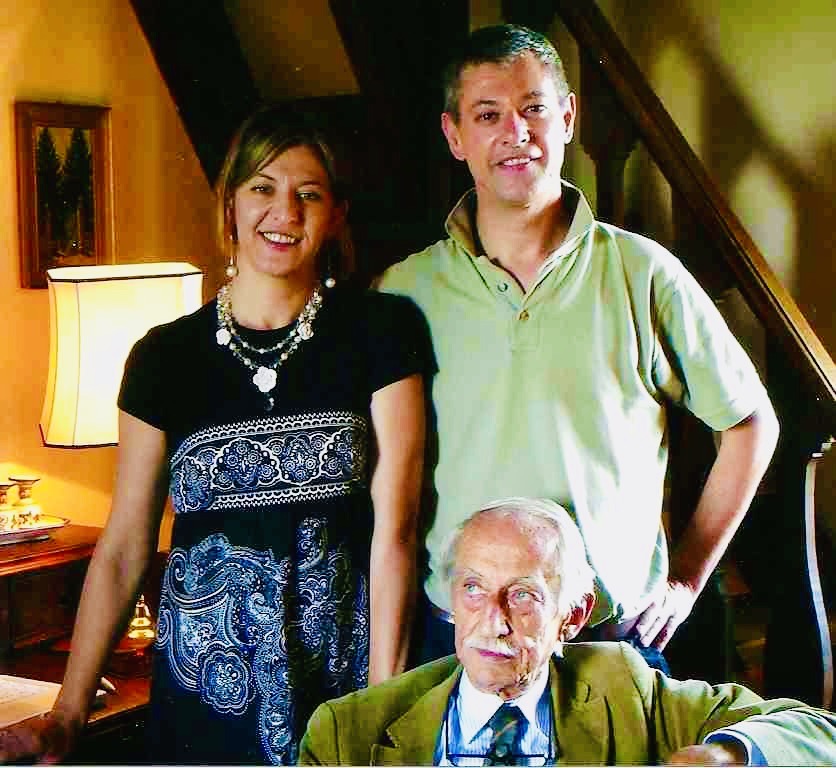
Me, papa, and my sister Sofia
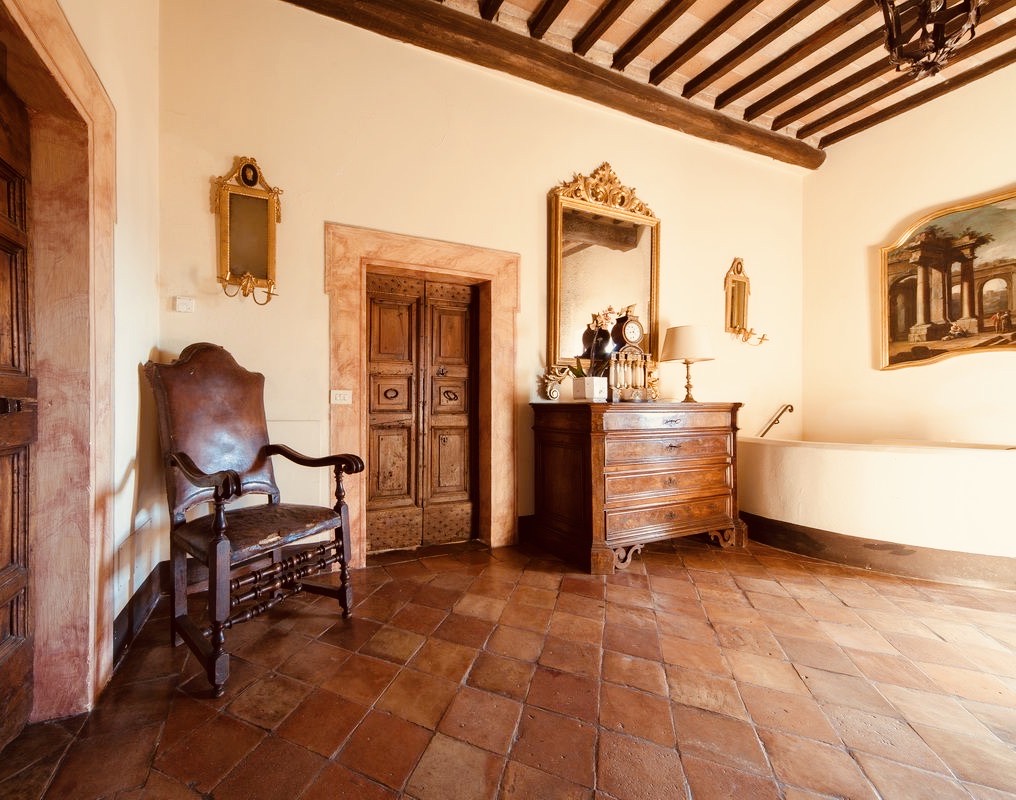
Faux marble door surrounds, our work for papa |

One of papa’s garden ‘rooms’, his fountain pergola |
When my father died we found ourselves having to sell his house. During the twenty-five years that he owned Porchiano, the place was slowly emptying of all its residents. To facilitate the sale and keep an eye on the garden, I proposed to the family that I move in – and I did so for two consecutive winters. Heating the tower, with its series of communicating rooms, one on top of the other was a losing battle. I reduced gas consumption to a minimum and installed myself in a second-floor bedroom – not the large one where Guy Munthe’s good friends Princess Margaret and Helena Bonham-Carter had both stayed (with its seventeenth-century doors that didn’t shut properly, and huge fireplace that shot all the warm air up the chimney) but a smaller one opposite the elevator with a comfortable en suite bathroom. I set the thermostat so that the house wouldn’t go below sixty degrees; weather-stripped all the doors, and put the heaviest comforter I could find on my bed. When I wasn’t in the garden raking the oak leaves that swirled in the gray November and December skies; clogged the gutters, and massed in piles against the hedges, I sat by the burning fireplace in the dining room. There I would prepare my lessons, eat, read, snooze, and receive visitors. Unwittingly I had recreated the habits of the former owner who, in his later years, had hibernated in that same first-floor room where he had installed a stove for cooking, a stone sink, a sofa on which to doze and sometimes spend the night, armchairs for his guests, and where he read his books and listened to his music.
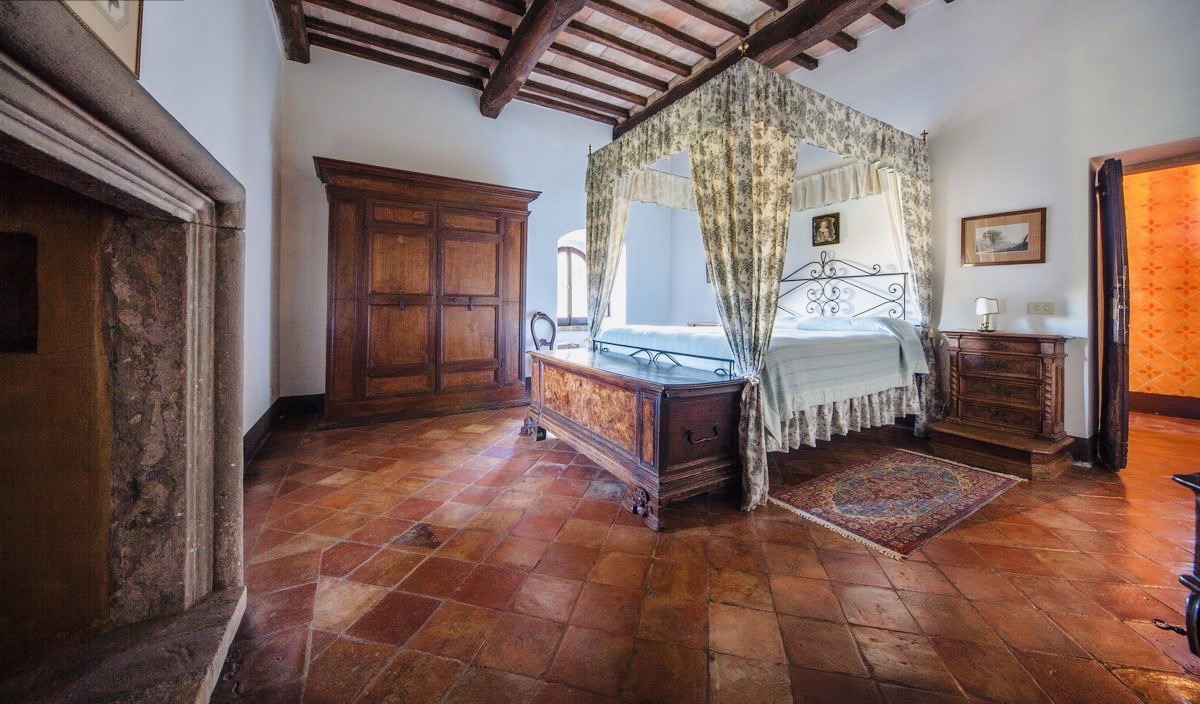
The Princess Margaret bedroom
The kitchen was freezing cold and most of the time I preferred to cook and heat my meals in the dining room fireplace, using grates and tripods. What I remember of those winters; of the wan light in the French windows that I could see declining on the beautiful stones of the courtyard; of the wind that rattled in the chimneys, it is the memory of the comfort of that permanently lit fire that I cherish the most. Who cares if the tower sprites played tricks on me, beguiling plumes of smoke to waft from the electrical sockets, commanding the elevator to ascend and descend on its own! Although confined to one room to spend my evenings, the house was alive and I felt its benevolence. At dinner time, I’d pile a half-dozen links of those beautiful Umbrian sausages on the grill, along with slices of bread, and pour myself a glass of Rosso di Montefalco. I’d poke the sausages so that the fat would drip onto the sizzling embers, and roasted them the way I liked – lacquered in their lard, browned to the point of combustion.
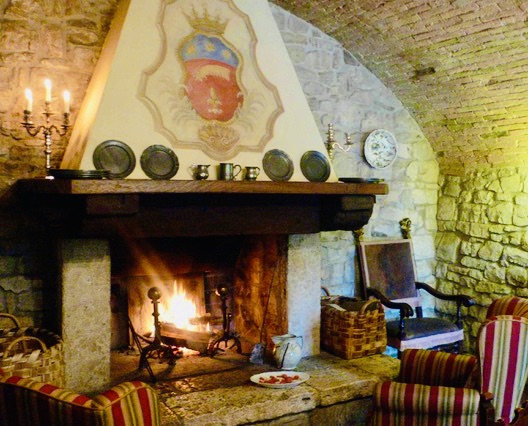
My favorite spot, the dining room fireplace (coat-of-arms by Dan and me
For Christmas of 2017, Dan and I invited friends who had frequented and loved the tower to share the last supper. There was no shortage of Norcia sausages, roasted in the fireplace that had been the companion of countless lonely evenings. It was an emotional gathering during which all present were informed that Porchiano had found a buyer and would soon change hands. Everyone recounted beautiful memories: the wisteria in bloom and the scent of old roses, or the winds and mists of autumn – and we said goodbye as if to a loved one.
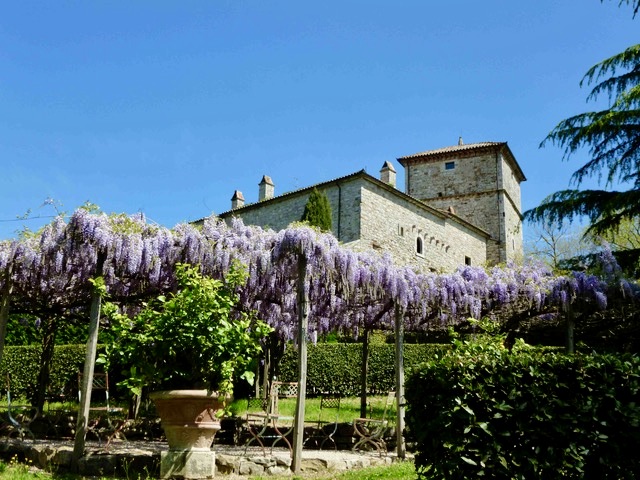
Wisteria in bloom, papa’s Capri garden






